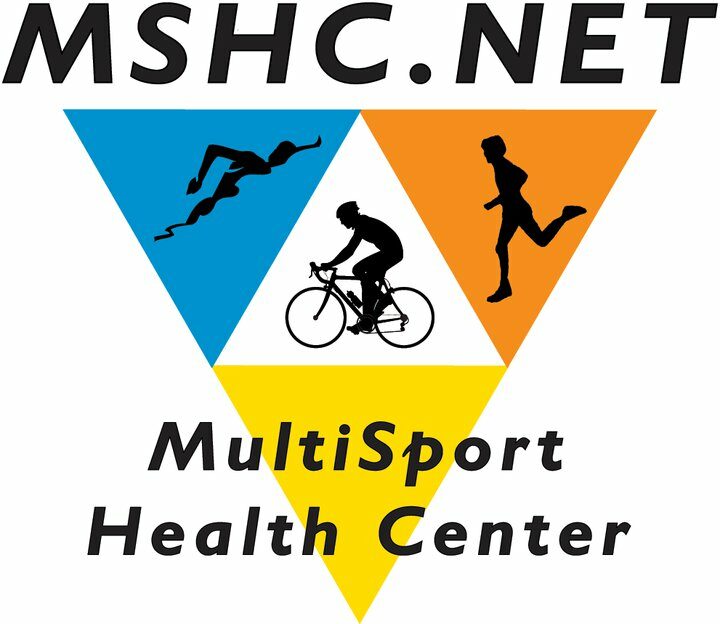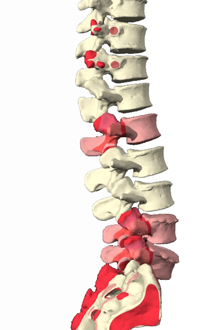
Healthy Lumbar Curve
This article is not intended for those who have back pain.
Rather it is for healthy active people who wish to stay that way, by avoiding or correcting the problems that affect 70% of the population. Duke University found treating back pain costs Americans $26 billion in 1998 alone. Aside from becoming the computer generation, we have also become the sitting generation. We spend hours and hours every day sitting at our desk on the computer, driving our cars or watching television. This means the hips are flexed at a 90-degree angle and our back is rounded over in the shape of a giant C. To counteract this damaging posture, you must maintain spinal flexibility, stretch the shortened muscles and strengthen the weak muscles affecting the spine and hips.
To maintain a healthy and normal range of motion in the lower back you must attempt to balance your movements.
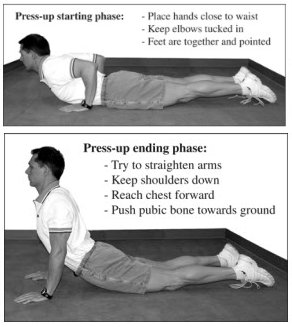 When was the last time you bent backward? For some, the answer might be as long as decades. If I were to design a new fitness program that only utilized the right side of the body – no left
When was the last time you bent backward? For some, the answer might be as long as decades. If I were to design a new fitness program that only utilized the right side of the body – no left
side work period, people would think it were strange. This program would be no more flawed than bending forward but never bending backward. Just look at the Lumbar spine and you will see the curve is concave (See Healthy lumbar curve photo). Forward bending or slouching is actually straightening or flattening the natural curve of the Lumbar spine.
Over time this compresses the discs and accelerates degeneration, which leads to pain and dysfunction. The best way to correct this imbalance is to regular do press-ups (See photos). A physical therapist named Robin McKenzie proved that 80% of lower back patients can effectively manage their condition when properly educated and trained to perform pressups and side glides. A rehab ball can also be used allowing gravity to help facilitate spinal extension (See photo).
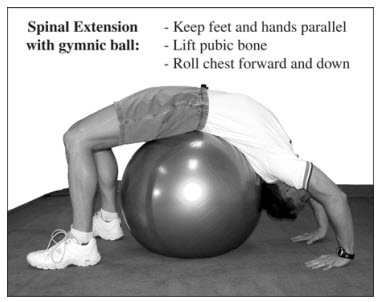 A close examination of the sitting position will demonstrate which muscles are in a chronically contracted position. These shortened muscles must be stretched as part of a regular maintenance program offsetting the affects of flexion at the waist. Remember, in order to effectively change or lengthen tissue, a stretch must be held for at least 30 seconds. The following is a basic list of muscles to stretch: hip flexors – iliopsoas, rectus femoris; quadriceps – vastus lateralis, vastus intermedis, vastus medialis and rectus femoris; and calf muscles – gastrocnemius and soleus. It is important to try and stretch multiple areas simultaneously thereby affecting the entire kinetic chain. For example, it is a good idea to stretch the hip flexors and the quadriceps at the same time (See photo).
A close examination of the sitting position will demonstrate which muscles are in a chronically contracted position. These shortened muscles must be stretched as part of a regular maintenance program offsetting the affects of flexion at the waist. Remember, in order to effectively change or lengthen tissue, a stretch must be held for at least 30 seconds. The following is a basic list of muscles to stretch: hip flexors – iliopsoas, rectus femoris; quadriceps – vastus lateralis, vastus intermedis, vastus medialis and rectus femoris; and calf muscles – gastrocnemius and soleus. It is important to try and stretch multiple areas simultaneously thereby affecting the entire kinetic chain. For example, it is a good idea to stretch the hip flexors and the quadriceps at the same time (See photo).
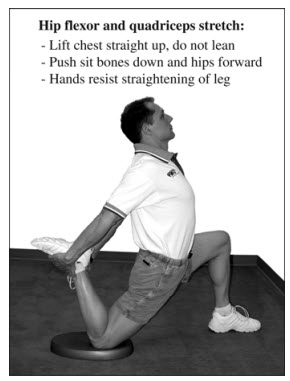 There are primary muscles that directly affect our posture. There are also secondary muscles that stabilize or support these primary muscle groups. Both groups must be strengthened to achieve good posture and a functionally healthy lower back. The following is a list of muscles that need to be strengthened: buttock muscles – gluteus maximus, medius and minimus; hamstrings- including the adductors in the eccentric phase; abdominal muscles – rectus, obliques and transverse; and erector spinae. Body weight squats are a great exercise for building gluteal muscle when done with proper form for 4 sets of up to 100 repetitions. V lunges at 45 degrees are good for eccentric strength of the adductors and gluteals. For added stability training, these exercises can be done standing on a Bosu or stability disc. Other forms of exercise like Pilates and Yoga focus on strength and flexibility in a system that attempts to balance or coordinate muscle groups against their antagonist.
There are primary muscles that directly affect our posture. There are also secondary muscles that stabilize or support these primary muscle groups. Both groups must be strengthened to achieve good posture and a functionally healthy lower back. The following is a list of muscles that need to be strengthened: buttock muscles – gluteus maximus, medius and minimus; hamstrings- including the adductors in the eccentric phase; abdominal muscles – rectus, obliques and transverse; and erector spinae. Body weight squats are a great exercise for building gluteal muscle when done with proper form for 4 sets of up to 100 repetitions. V lunges at 45 degrees are good for eccentric strength of the adductors and gluteals. For added stability training, these exercises can be done standing on a Bosu or stability disc. Other forms of exercise like Pilates and Yoga focus on strength and flexibility in a system that attempts to balance or coordinate muscle groups against their antagonist.
If you have back pain, seek a health care provider who uses a multi-disciplinary approach. This means some one who understands how and when to utilize the following treatment protocols: patient education about lower back pain, hands on treatment of soft tissue, knowledge of stretching and rehabilitation of the appropriate muscle groups, and the skill to mobilize spinal joints when appropriate. Adjusting the lower back and never addressing the muscle weaknesses can lead to a hyper-mobile and unstable joint. The worst things for a lower back injury are avoidance and denial. Years ago people were given bed rest and inactivity for managing their back pain. This form of thinking is absurd. Would you remove a book from a child that has difficulty reading?
If your back is injured, you must be guided and educated in the proper techniques to strengthen, stabilize and stretch. To stay healthy and active, your weakest link must become your strongest.
As previously printed in Houston Sports News
